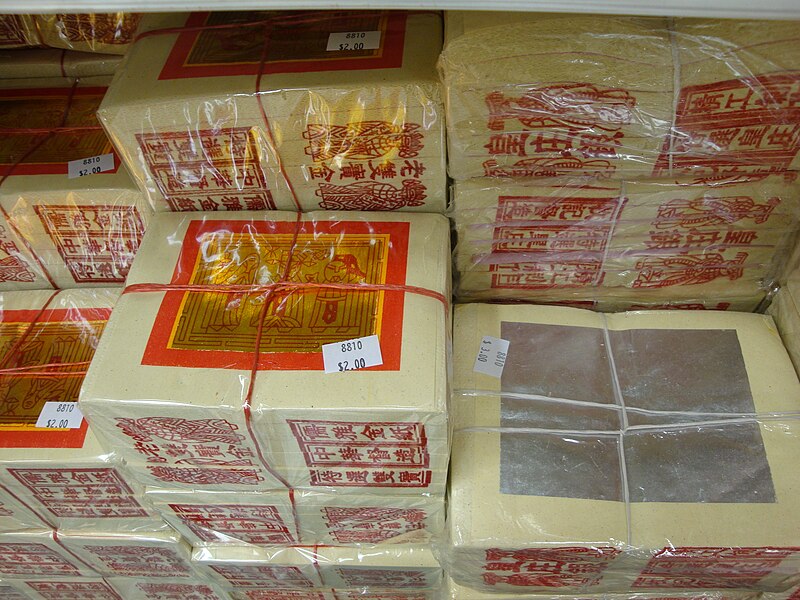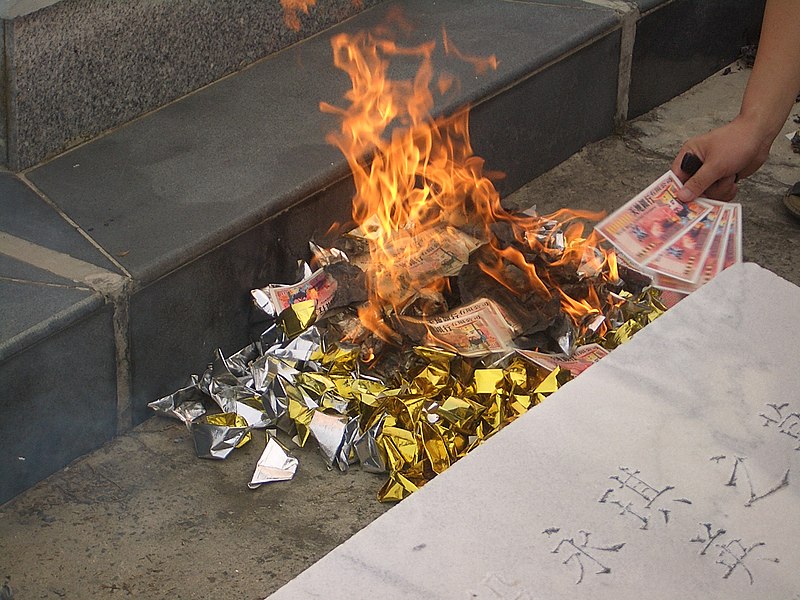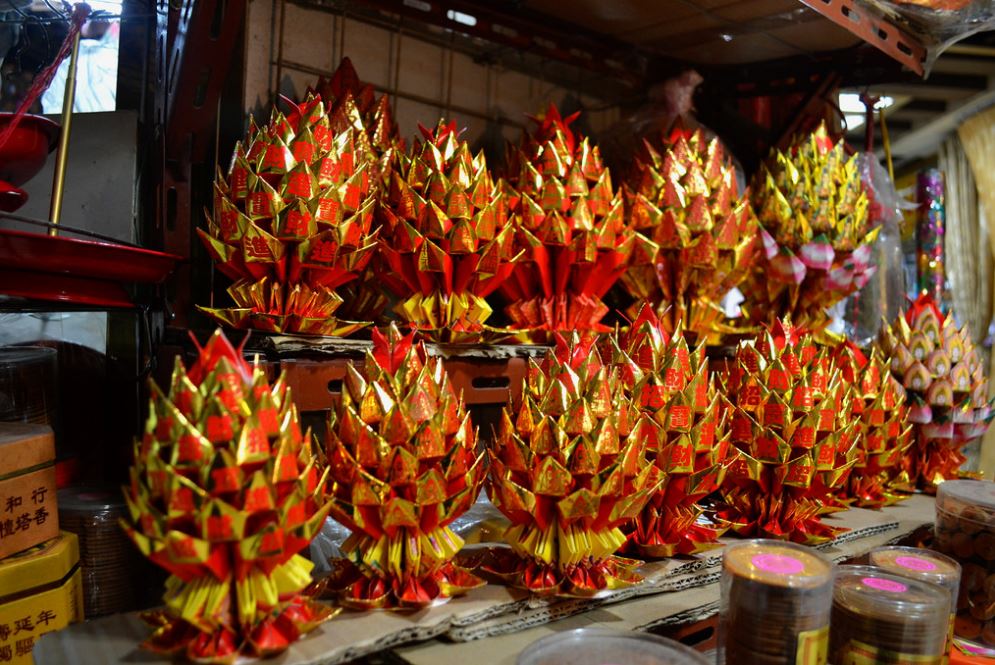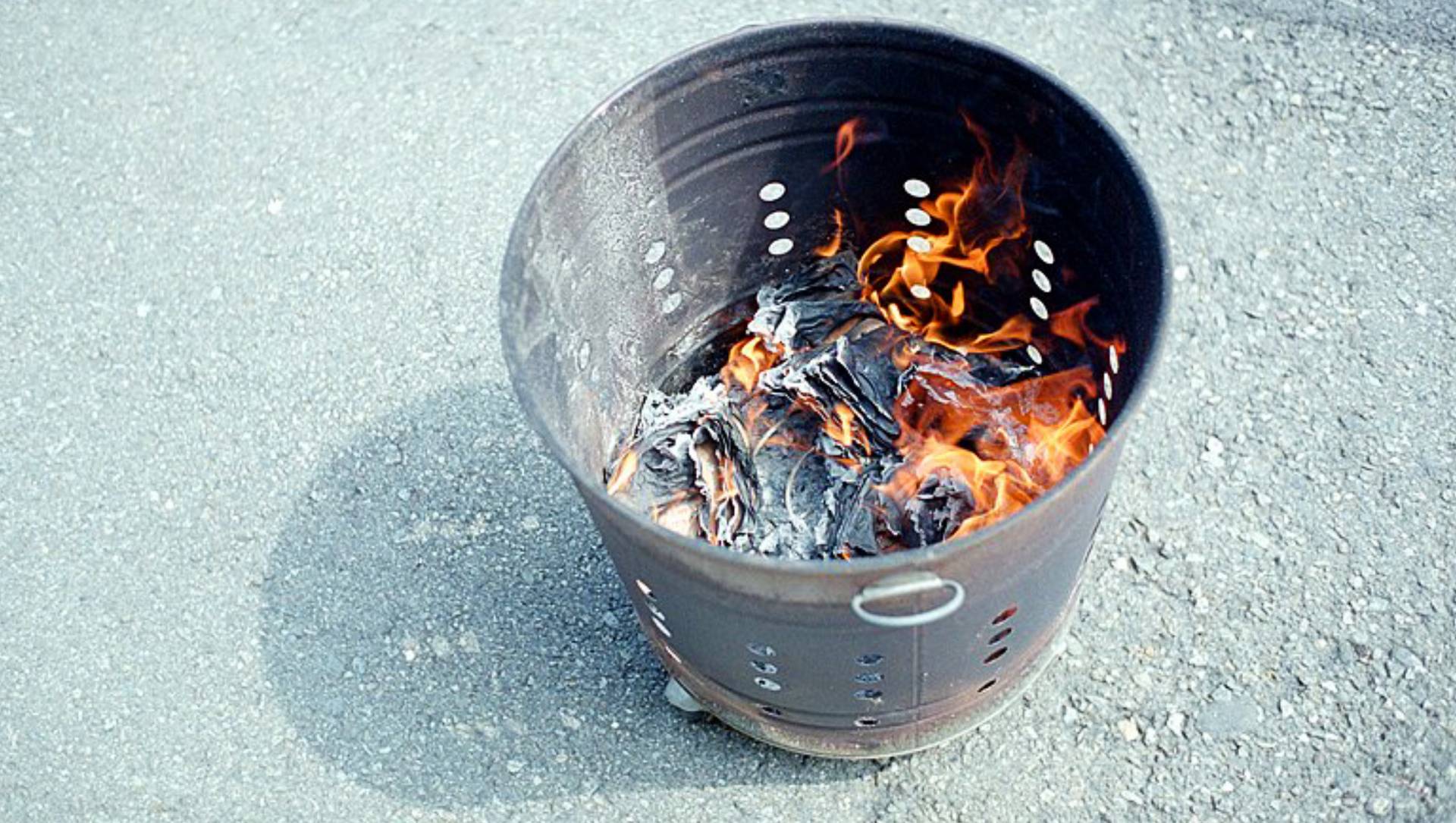As I was scouring the streets around noon on Monday, looking for any street vendor that came to work on the “praying day” of Thailand’s Chinese New Year celebrations, I ended up banging my foot into someone’s burning bucket of joss paper and accidentally getting a big whiff of fresh smoke.
There were at least five more of these buckets letting off smoke in my field of view just on this one street.
Joss paper, sometimes also called “ghost” or “spirit money”, are copper, gold and silver sheets of paper, traditionally burned to honor deities or ancestors that have passed away, during special occasions and Chinese holidays.

For Thai Chinese citizens, these include funerals, the Qingming Festival (aka. Tomb-Sweeping Day) and, of course, Chinese New Year.
(Editor: Xin Jia Yu Yi Xin Ni Huad Xai, fellow Teochews)
This year’s festivities, however, felt like they had a different tone, given that Bangkok is in the middle of a battle with hazardous PM2.5 (particulate matter with a diameter of 2.5 or less) smog — especially since outdoor burning, including of incense and papers — has been found to be one of the biggest contributors to air pollution.
In fact, several health experts and doctors have spoken out, urging citizens not to burn joss papers and limit incense-burning during this holiday as it can worsen air pollution as well as pose severe health threats.
Health Department director-general Dr. Panpimol Wipulakorn cautioned that pollution from the two sources can cause eye irritation, sneezing, breathing difficulties and headaches, while prolonged exposure could even cause cancer, reported The Nation.
“The smoke from Chinese joss papers and the burning of incense contain many kinds of hazardous heavy metals and carcinogens. In an examination of the leftover ashes, we found a very high amount of carcinogens,” she said.
“It would be safer for everyone to refrain from burning a lot of incense and Chinese papers at the same time.”

While some media outlets have reported on the ongoing debate around this suggestion, we wanted to go a little deeper and understand why the joss burning tradition is so important to so many people.
At this point, if you’re wondering how many Chinese Thais could really be burning joss papers and incense, we’ve got a good guess.
According to World Population Review, 14% of the kingdom’s population, or about 10 million people (including yours truly) identify as Chinese Thais — making us the largest minority group in the kingdom and the largest overseas Chinese community in the entire world.
Another survey by Theraphan Luangthongkum, professor of linguistics at Chulalongkorn University, suggested that the number citizens with at least partial Chinese descent is closer to 40 percent.

So let’s be extremely generous and say that a quarter of Chineses Thais still burn joss papers during this holiday — that already equates to 2.5 million people. Moreover, each family is not limited in the amount of joss paper they burn. I’ve personally witnessed practically a closets worth of paper casually tossed into a bonfire.
However, stopping this practice cold-turkey would be pretty difficult since traditions, especially ones held across decades and even centuries, are of fundamental value to Chinese Thais.
“Joss paper burning is a tradition that has been passed down from generation to generation for thousands of years now,” said a Chinese Thai man, Thanavit Sirirungaariyagral, who immigrated to Bangkok from Shantou, a prefecture-level city in Guangdong 32 years ago.
“It is our an ancient belief that people move on to another world after they die, one very similar to ours, in a sense, where money is still needed to buy things.”
The joss paper represents currency that one’s ancestors can use in the afterlife, he explained.
While there’s no set guidelines on what would happen if your relatives didn’t receive this “payment”, Thanavit believes it may bring distress to one’s ancestors.
“So under that belief, what would your ancestor live off of?” he asked.

However, when asked about the tradition under the context of Thailand’s current pollution, he said he thought citizens should limit the amount of joss paper used.
“We have to take care of people in this world too,” he said.
Apparently, Thanavit is not the only who thinks so. A female shopkeeper at a store in Bangkok’s Chinatown told Bangkok Post that the selling of joss papers has dropped by around 20-30% compared to last year.
“Some customers told us that they didn’t want to burn lots of papers because of the air pollution,” she said.

The aftermath waste produced from Chinese New Year can be compared to another iconic Thai festival, Loy Krathong. Also known as the “Festival of Lights”, it is celebrated on the evening of the full moon in November every year for people to pay respect to the Goddess of Water.
One of the most iconic traditions during the festival is the releasing of water lanterns aka “Krathongs” into bodies of water including lakes, canals and rivers — which inevitable produces a massive amount of waste every year.

This year, alone, the Bangkok Metropolitan Administration reported collecting a total of 841,327 krathong floats from the city’s various waterways. However, out of this number, 796,444 or 94.7 percent were reportedly made of natural or degradable materials, and only 44,883 or 5.3 percent were synthetic foam floats.
While in the past krathong were primarily made out of foam, plastic or paper, over the years the government had encouraged citizens to switch to biodegradable materials or fish food in order to leave the smallest possible carbon footprint.
That got me thinking: if Chinese Thais plan to burn paper every year for the rest of their lives, shouldn’t we also find joss paper alternatives that are less harmful to the environment as well?
Perhaps it’s time we switched to materials that don’t produce as much smoke or — as the next generation becomes older and creates families of their own — reimagine ways to carry out the tradition that isn’t harmful to, both people and the environment.

A guideline booklet on Air Pollution control for Joss Paper Burning by the Hong Kong government suggests exploring alternative forms of worship like offering flowers and smokeless incense or burning paper in furnaces to achieve no emission.
Meanwhile, a male worker in Mangkon Kamalawat in Bangkok’s Chinatown told Bangkok Post that worshippers no longer have to burn papers at the temple.
“We collect them and bring them all to the countryside and get rid of them. We no longer burn papers here,” he told the local media.
Yes, it is a tiny step that may appear inconsequential but, as American author Vernor Vinge once said, even the largest avalanche is triggered by small things.

What do you think Coconauts? Let us know your thoughts in the comment section or at @CoconutsBangkok.





Reader Interactions